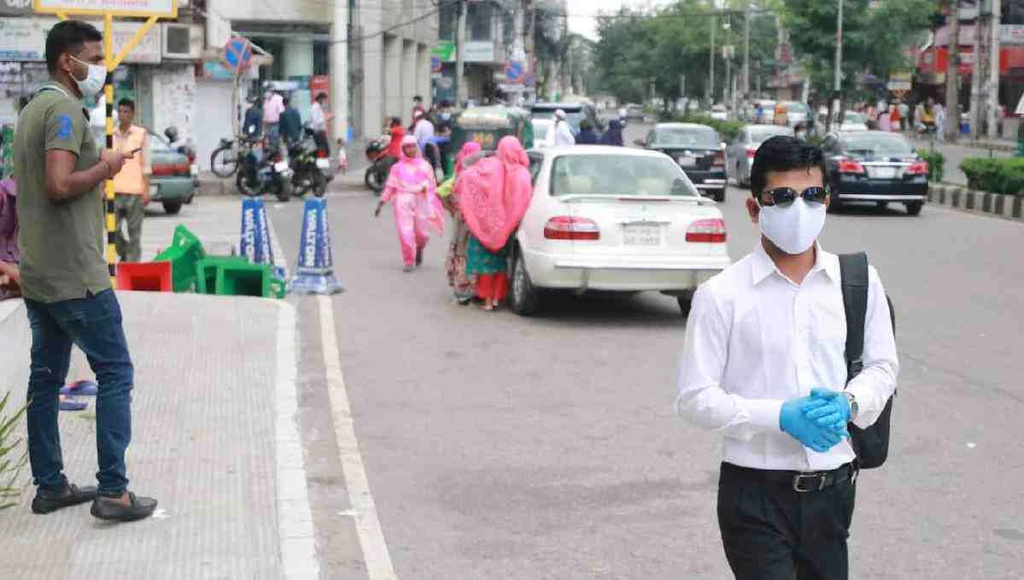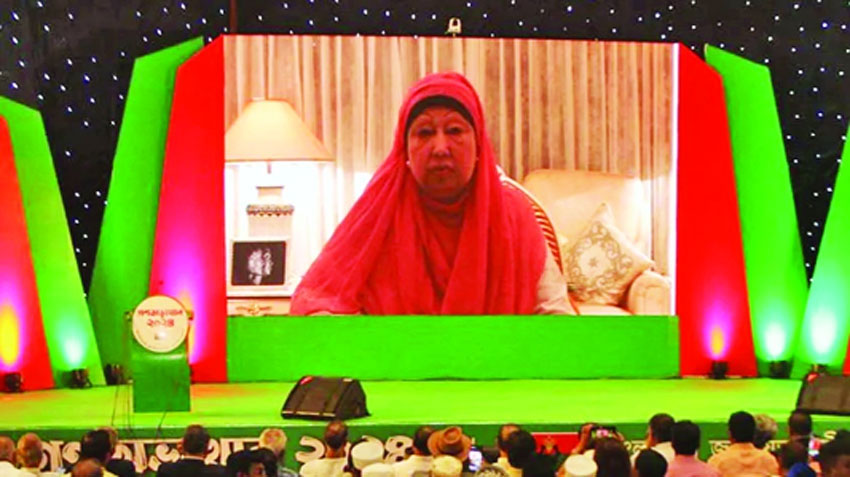- 2021-09-01 10:20:23
- LAST MODIFIED: 2025-12-30 05:49:11
Air pollution cuts Dhaka dwellers’ life expectancy by 7.7 years: Study

Photo Collected:
Staff Correspondent:
Dhaka, Sept-01,
Air pollution is reducing the life expectancy
of the residents of Dhaka, one the most polluted cities in the world, by 7.7
years, says a new study.
The residents of Dhaka
could live 7.7 years longer while the average life expectancy in Bangladesh
would have been 5.6 years higher if pollution concentrations could have been
complied with the World Health Organization (WHO) guideline, said an analysis
of data from the Air Quality Life Index, conducted by the Energy Policy
Institute at the University of Chicago (EPIC).
The study finds that
particulate pollution cuts global life expectancy by nearly 2.2 years.
Bangladesh, known as
one of the most densely-populated countries in the world, has been struggling
with air pollution for a long time.
In many cases, Dhaka,
the capital of Bangladesh, is often found to be the most polluted city in the
world in global indices.
Particulate matter
pollution continues to rise in Bangladesh. Since 1998, the average annual
particulate pollution has increased by 15.3 percent, cutting 0.9 years off the
lives of the average Bangladesh residents over the years, it said.
In each of the 64
districts, the levels of particulate matter were found to be at least three
times higher than the WHO guidelines.
The most polluted areas
of the country are Rajshahi and Khulna divisions as the average residents are
exposed to pollution that is more than seven times of the WHO guidelines,
reducing life expectancy by more than six years, it added.
According to the study,
Bangladesh, India, Nepal and Pakistan account for nearly a quarter of the
global population and consistently rank among the top five most polluted
countries in the world.
As a result, South Asia
accounts for 60 percent of the person-years that are expected to be lost
globally due to pollution levels exceeding the WHO guidelines.
The average life
expectancy across these four countries will be 5.6 years higher if pollution
concentrations are complied with the WHO guideline.
In each of these
countries, the impact of air pollution on life expectancy is substantially
higher than that of other large health threats. Smoking, for instance, reduces
life expectancy in these countries by as much as 1.8 years; unsafe water and
sanitation by as much as 1.2 years; and alcohol and drug use by about a year of
lost life years.
New data from the AQLI
underscores the health threat of a world without policy action. Unless global
particulate air pollution is reduced to meet the WHO guidelines, the average
person is set to lose 2.2 years off their lives. The residents of the
most-polluted areas of the world could see their lives cut short by 5 years or
more.
The average global
citizen is exposed to particulate pollution concentrations of 32 µg/m3—over 3
times the WHO’s guideline of 10 µg/m32. If this level of particulate pollution
persists, the health consequences of air pollution could shave 2.2 years off
global life expectancy compared to a world in which all countries met the WHO
guidelines.
In other words,
permanently reducing air pollution to the WHO guideline could increase global
average life expectancy fromroughly 72 to 74 years, and in total, the world’s
population could gain 17 billion life-years.
Measured in terms of
life expectancy, the ambient particulate pollution is consistently the world’s
greatest risk to human health.
First-hand cigarette
smoke, for instance, reduces global average life expectancy by about 1.8 years.
Alcohol use reduces life expectancy by 7 months; unsafe water and sanitation, 7
months; HIV/AIDS, 4 months; malaria, 3 months; and conflict and terrorism, just
18 days. Thus, the impact of particulate pollution on life expectancy is
comparable to that of smoking, twice that of alcohol and drug use, three times
that of unsafe water, five times that of HIV/AIDS, and 29 times that of
conflict and terrorism.
End/Dct/Nit/Sma/










